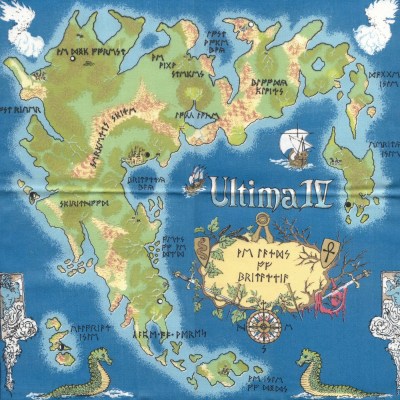I don’t know for a fact that Ni no Kuni: Wrath of the White Witch director Ken Motomura or writer Akihiro Hino ever fooled with the Ultima computer roleplaying games, but if I had to guess, I’d bet they did. Or someone at Level 5 did, because man, the collector’s edition is like hopping into a time-machine and rolling back to the days roleplaying games actually came with stuff.
No, I don’t mean the sort of post-Todd McFarlane toy porn you get with today’s crazy-priced, limited game editions: monster-sized boxes harboring ornate polymer statues no one has room to display or probably much desire to explain to passerby. “This one is of Alduin the world eater perched on a word wall!” sounds like something 40-year-old Andy Stitzer might say, because it is.
I’m talking about the Wizard Edition of Ni no Kuni, which sold out so fast (the “in stock” disclaimer on the official sale page has been wrong for months) I paid close to three times the asking price to land a copy. It arrived in an unassuming box with a suspiciously Yoshitaka Amano/Final Fantasy-like box logo — an embossed version of the one on the PS3 case sleeve; I was more than a little concerned, prying the cardboard flaps open. I blew my rainy day fund on this?
But stuffed inside was something I hadn’t come across in ages: a suspiciously Ultima-like tome. And I mean tome: I’m talking about a novel-length book, clocking in at over 300 pages (beating even Ultima by a mile) that details the game’s elaborate world, its bestiary (replete with lovely little color sketches), its alchemic and magical systems and so forth. Those of you playing the game (or who’ve long since finished it) know this as the Wizard’s Companion, because the developers were kind of enough to fold it into the actual game and gameplay, where you can unlock pages as you go; find them all, and I’m pretty sure there’s a trophy involved.
Richard Garriott has a thing about this. Those of you who’ve not only played the Ultima games but actually owned them back in the day doubtless remember Origin’s large cardboard boxes stuffed with goodies like little medallions, cloth maps and slender lore booklets — game swag before we called it that. You can get a sense for what that was like from GOG.com, whose updated versions of the Ultima installments include scans of some of the original materials, but it’s not the same as holding something with heft in your hands.
Like Ni no Kuni‘s wizard coin. I know, it’s kind of silly — it’s just a piece of cheap, gold-colored metal pressed into cardboard and sealed in plastic, after all. But there’s something the opposite of chintzy about it, just like Ultima‘s ankhs and Fellowship medallions. The same goes for the gorgeous watercolor sketches on high quality paper by Studio Ghibli artist Yoshiyuki Momose, or the plush toy reproduction of Drippy (your guide in the game). In fact the only letdown is the “Special Music Selection CD” with two of frequent Hayao Miyazaki collaborator Joe Hisaishi’s compositions — the full soundtrack contains 21 tracks, and boy are you missing out if you haven’t picked it up.
That’s it, really — just me tripping down memory lane, remembering when game swag felt distinctive and meaningful, not dashed off at some mass-assembly plant and stuffed in a giant box with lots of styrofoam to sort of spatially justify the triple-digit price tags. Judging from Ni no Kuni‘s instant sales success here in the U.S., Namco Bandai probably could have sold two or three times as many of these things.


